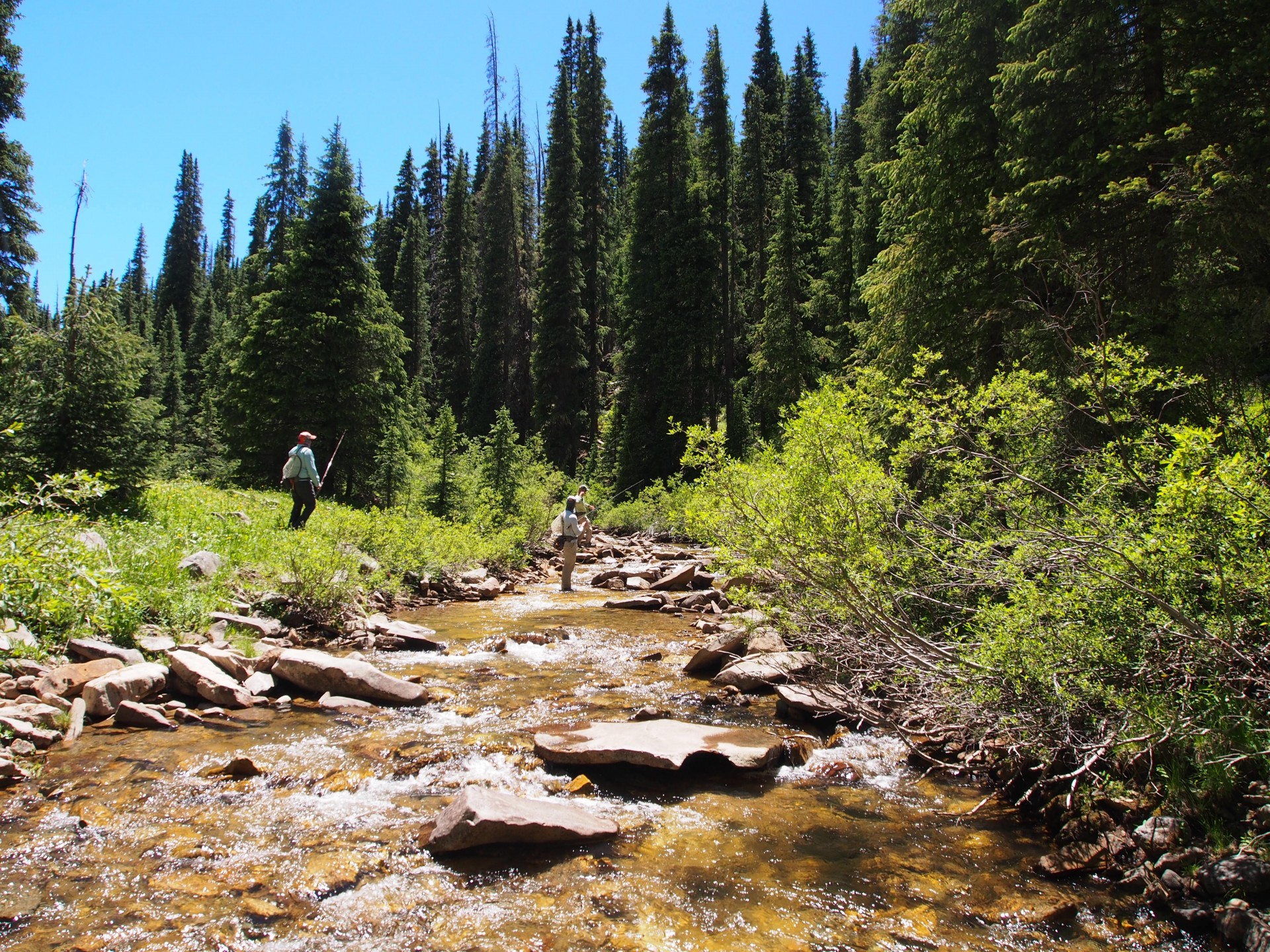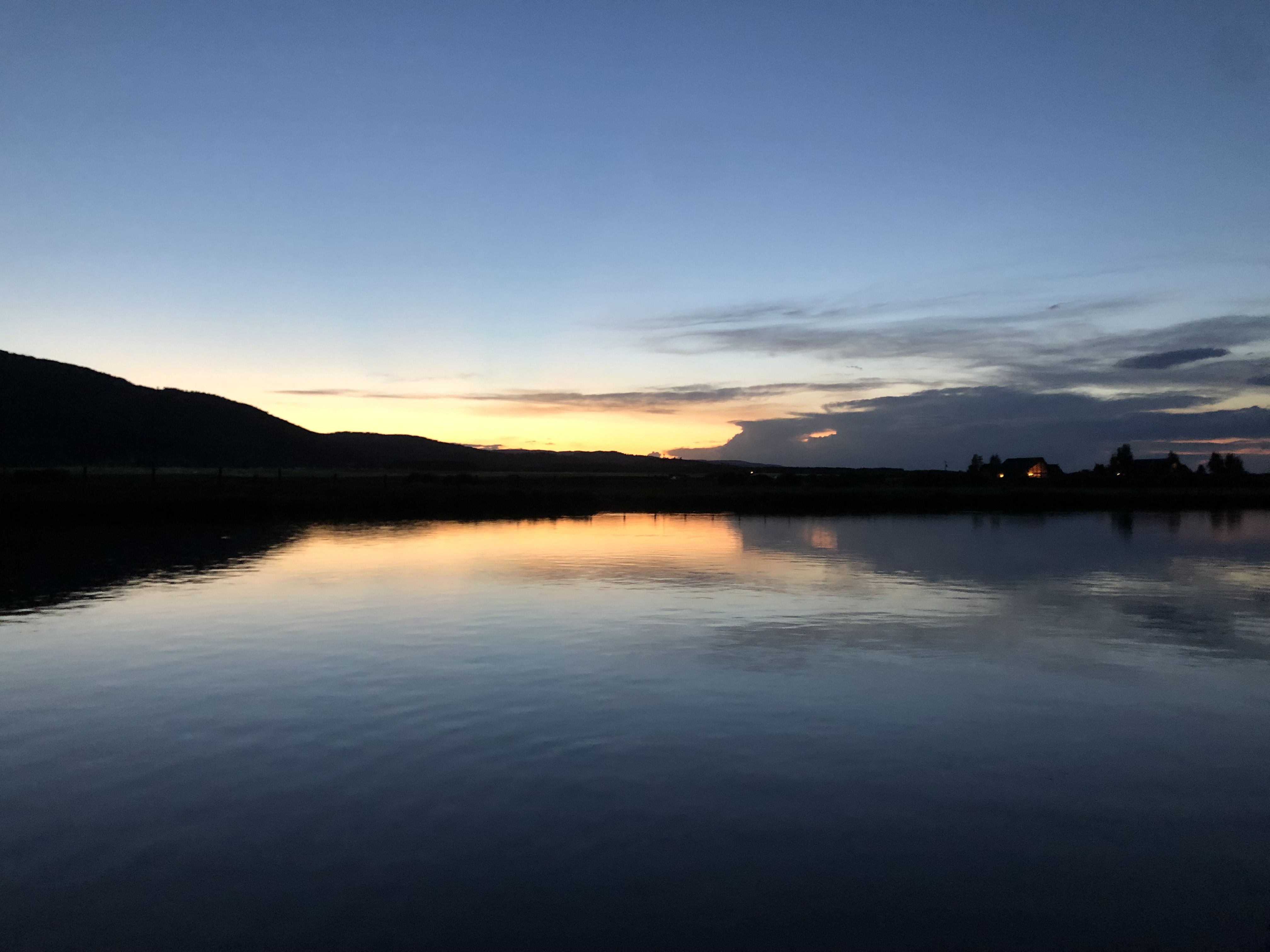Idaho
July 2011
Your first experience fishing to a rising trout is an unforgettable exchange. Initially spotting a fish in contrast to the rest of the stream as it sits high in the water column waiting for a recently hatched bug or spinner to drift by brings an unparalleled level of excitement. The fish leans its shoulder slightly one way or the other, gently kicks its tail and elevates to the surface, then pauses for a brief moment, discerning. Its eyes seem to grow bigger as its sizes up its prey just before its nose gently breaks the surface tension and the fly vanishes from its perch, leaving nothing but a perfectly round dimple on the surface. The fish returns to its lane, browsing once again the buffet of bugs and debris floating downstream.
My first interaction with a rising trout was on the Teton River near Driggs, Idaho. After a day of hiking with my mom and brother, I begged my dad to take me to the river for the evening hatch. We received some pointers from my good friend, David, who pointed us to a public access location just northwest of town not far from his house.
We headed for the stream 2 hours before sunset. I wasn’t sure if there would be much action happening yet, but I was eager to check it out. Recognizing my anticipation, dad offered to put the rods together so I could take a look in the water and see if there were any fish rising once we arrived. We pulled onto the gravel pull off, and I slammed the door behind me, leaping across the road to see what I might find. I slowed my steps as I neared the edge, then peered over the side of the bridge into the flat water below.
I heard it first.
SIP.
The bridge cast a shadow out across the river, and just beyond where the sun shined over, I could see it lingering a few inches below the surface.
SIP.
The water was perfectly clear, so the fish was impossible to miss. “DAD, you’ve got to come see this!” I could not contain my excitement. In my mind, the fish was already in my net.
I ran back over to help dad finish getting ready to hit the water. We put on a small PMD fly and trudged through the willows down to the river, just downstream from where the fish was rising.
SIP. It was still active.
Dad and I strategized. We stood on a gravel bank, and I laid out a cast. Then another. It took a few tries before I got a cast into its feeding lane in the middle of the stream, and then a few more tries before I decided I wasn’t throwing what the fish was after. SIP. It kept on eating.
We changed flies, hoping a different PMD pattern may change our luck. I had seen a few on the water, so we gave that a whirl. I again made a number of drifts, including a few that seemed to draw a line straight down the fish’s back, before deciding we weren’t matching the hatch. At least, not the one our target was eating.
We decided to try a royal wolf, something attractive that may entice him to eat. Again, no love.
Maybe a caddis? Nope. That didn’t work either. How about a stimulator? Again, no love. I saw all sorts of bugs begin hatching and flying around, but none seemed to work when presented artificially. After many ignored patterns, I decided to take a closer look and try to lay eyes on what specifically the trout was eating. He had not given any of our flies even the slightest chance. I watched as the fish rose time and time again to what appeared to be nothing. That makes it hard to match.
After 10 fly changes, I looked back through my box and came across a black ant. The fish had been rising to something seemingly invisible. Could it be so simple as the classic terrestrial?
I tied on the ant, waited for the fish to rise again, then made a cast. It landed gently, a few feet upstream from his feeding area. As it drifted downstream into his zone, I noticed the fish begin to slide back, ever so slowly rising in the water column, approaching my fly, and at the last second, refusing. Finally! A response. We were onto him. We made a second cast. No response. Then a third.
I think I had become so accustomed to being ignored that when the fish finally rose to my fly and sipped it in, I was caught off guard and forgot the basics setting the hook. I missed him. After nearly 45 minutes of working this one fish, I blew it. We paused to allow the fish to settle down, though it did not seem spooked. The trout rose again, but on subsequent shots, refused my fly.
Time for yet another fly change.
We put on another ant, but this time a red one. I figured that if it was keyed in on ants, the fish may like seeing something slightly different from our previous pattern. I was wrong. Cast after cast, I received refusal after refusal. But the fish was feeding more actively again, continuing to eat what appeared to be a little, black speck floating on the surface.
On the thirteenth fly change, dad and I finally met our goal. We put the black ant back on, and after two casts, felt the deep satisfaction of finally hooking and landing our fish. This time, it saw the fly, kicked once, and engulfed it without hesitation. After a few jumps and a short run, I landed my first cutthroat trout. Dad and I laughed and smiled as our patience paid off.
It was not an incredibly large fish—17 inches at most—but well worth the effort. What was most significant about that outing was not the size of the fish or difficulty of the fight, but the ability to see its every move and observe its behavior. I was entranced watching the fish follow a pattern of rising, resetting, refusing, and rising again. To be able to watch its response (and often lack thereof) to our fly choices and presentations was frustrating at times, but greatly rewarding once we finally deceived our target and brought it to our net. This is the ultimate game of fly fishing, the art of fooling fish.




